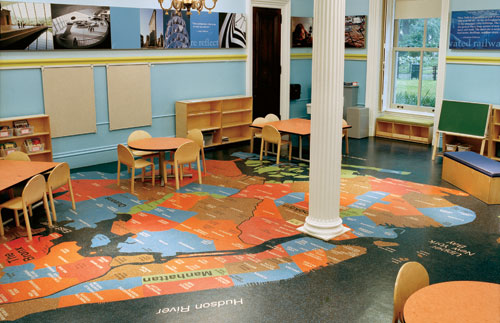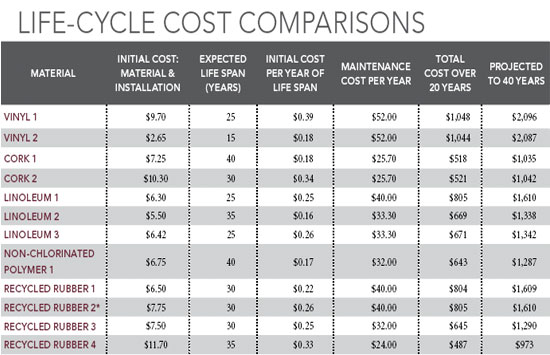Sustainable Rubber Flooring for Healthcare and Education
Renovation is also a strong trend. Often these are modifications to homes of baby boomers who want to age in the same place they raised their children, or move to smaller homes in urban areas where density means less driving and more cultural opportunities. But “traditional” hospitals are undergoing renovation as well. According to a survey conducted by Health Facilities Management magazine and the American Society for Healthcare Engineering (ASHE), 73 percent of construction is currently for facility renovation and modernization to be greener and more patient friendly, and to update information technology infrastructure and facilitate greater clinical integration within the facility and among healthcare providers (Health Facilities Management, February 2011). The 2012 introduction of Medicare's 30-day return stay rule, part of the Affordable Care Act, is driving health systems to manage patient care better and improve readmission rates.
 |
Resilience is essential in flooring for educational facilities, making a daily difference in the safety and comfort of teachers and kids alike. Designers of City Hall Academy at the Tweed Courthouse, New York, New York (Architect: Loffredo Brooks Architects) were also committed to making the city facility an excellent example of environmental responsibility, so sustainability in all materials was a priority. But the ability of recycled rubber flooring to incorporate almost any combination of color, pattern, or artwork also brought an opportunity to make the entire floor a teaching moment: a waterjet-cut Technicolor map of the city. Photo courtesy of ECORE |
School Change
Although they are probably getting the most press (as they have since 1946), the baby boomers are not the only part of the population driving innovation in facilities. Changing patterns of fertility, immigration, and education, together with a school infrastructure that is crumbling in many places, will require both investment and rethinking. The picture for educational facilities is complex, and varies significantly by region and even by district. New schools are still being built, especially in western and southern states where demand is high. But renovation is a strong trend in education just as in healthcare. Many existing schools were first built when baby boomers were babies, and some schools are even older. In districts where budgets are tight and approval for new construction takes years and can change with the political climate, funding for small improvement projects is often less difficult.
School districts in the U.S. spent just over $12.24 billion on construction projects completed during 2011, including 56.4 percent on new schools ($6.9 billion). The rest of the construction was split between additions to existing buildings ($2.69 billion) and retrofit and modernization ($2.65 billion).
The outlook for educational construction has a lot of “ifs.” This includes the size of budget cuts and the fate of the proposed American Jobs Act, which would make a $25-billion investment in school infrastructure to modernize at least 35,000 public schools, and a $5-billion investment in modernizing community colleges.
These new schools and renovations are likely to be highly innovative and sustainable, as the design of high-performance schools has advanced dramatically in recent decades. This is in response to new technologies in the classroom, empowered parents, and growing evidence that informed design of classroom spaces has a positive impact on the health and performance of both teachers and students. Renovations are often undertaken specifically to improve energy efficiency and cut costs. As with healthcare, new concepts of educational facilities are emerging, including schools as community centers, as places for retraining and lifetime learning, and as physical buildings to support distance learning and other technology-based education.
 |
This life-cycle analysis study by the independent organization Center for Health, Environment and Justice compared major flooring types for their total cost over 20 and 40 years, including material, installation, and maintenance. |









